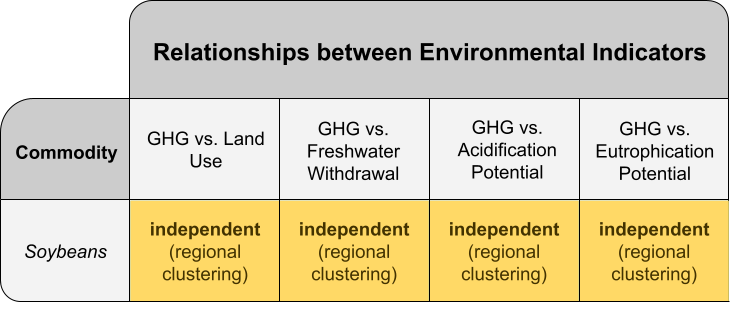
Soybeans are one of the most commonly grown crops due to its versatility; it makes up to 85% of animal feed and many products specific for human consumption such as tofu, soy milk, and more. Furthermore, as animal protein consumption increases, so will soy production, making it imperative that the industry is made to be sustainable and not only efficient in reducing GHG emissions, but minimizing all environmental impacts.
Soybean oil and soybean production does not display strong relationships between the environmental indicators and GHG emissions, but farms within a certain country tend to demonstrate similar patterns. Further research into identifying characteristics of regional farms that drive trade-offs – such as in South African farms with a low acidification potential but high land usage or Iranian farms that maintain low land use values but much greater acidifying emissions – will allow for strategic intervention. Finally, greenhouse gas emissions in Latin America are predominantly from land use change, making proper regulation of the practice critical for reducing emissions.

